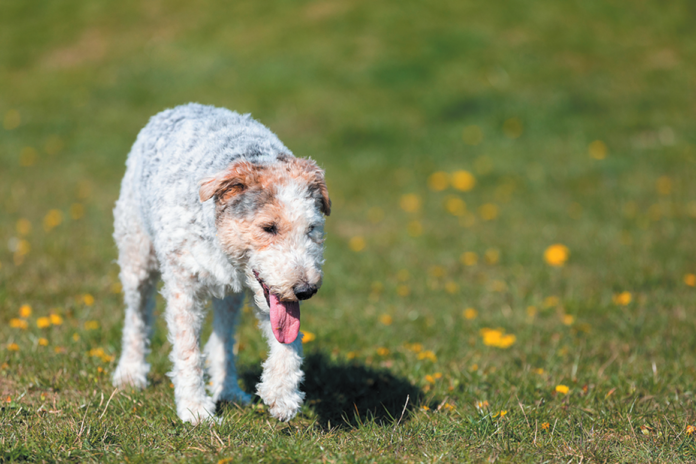Your geriatric dog has begun walking very slowly and seems to be in pain, with perhaps a twist or weakness in his gait. He also seems to be experiencing pain when he goes from lying down to standing. If the veterinarian rules out arthritis, there’s a chance it’s spondylosis, the growth of spurs on the bones that comprise the spinal column. Those bones are commonly referred to as the vertebrae.
Generally occurring in older dogs, spondylosis destabilizes the scaffolding of the vertebrae, which protect the delicate spinal cord. Bone spurs then grow in response in order to reinforce the spinal system. If the disease is going to develop, the process generally begins by the time a dog is around 10.
Interestingly, most of the time you will not notice that a dog has developed spondylosis. Neither will the dog. “Spondylosis very, very rarely causes clinical signs,” says Tufts veterinary surgeon Michael Kowaleski, DVM. The bony spurs actually help stabilize the system and allow the dog continued freedom of movement. In fact, it is not uncommon for spondylosis to be diagnosed incidentally, when a veterinarian takes x-rays to evaluate a different condition.
However, if a dog has pain upon movement and the doctor takes radiographs to see what’s wrong, the x-rays will show whether the discomfort is a result of spondylosis. The bone spurs will reveal themselves, perhaps with the vertebrae closer together than they would be normally. The bones may also appear misshapen in spots because of the shift in bone alignment. It shows clearly on x-ray imaging.
Spondylosis can affect spinal bones as far forward as a dog’s mid back but also frequently occurs in the lower back (near the tail) and can end up in parts of the spine that affect movement of the hips and hind legs.
Involving a neurologist
Oftentimes, the diagnosis of spondylosis starts with a primary care vet or a veterinary orthopedist. Someone notices that their older dog is not walking right, and they think it’s arthritis. But upon pinpointing the problem, the doctor may refer the dog to a veterinary neurologist. That’s because movement of the spinal bones that occurs with spondylosis may mean a bone ends up pressing into a nerve, or nerve roots, along the spinal column. That can cause considerable pain that needs to be relieved for the dog to have continued quality of life. A neurologist may look for nerve compression with magnetic resonance imaging (MRI). X-rays would not be reliable for picking that up.
Treatment options
Of course, if a dog is not in pain and spondylosis has been detected in the course of looking at x-rays for a different condition, no treatment is necessary. There is nothing wrong with the formation of bony offshoots from the vertebrae if they are not making it difficult for a dog to move about or causing discomfort. That’s true no matter how off kilter the arrangement of vertebrae may look on imaging.
If a dog is feeling pain, the first step may be to try analgesics. It doesn’t have to be just a single type of pain reliever. For instance, the veterinarian may prescribe amantadine and gabapentin. Both target nerve pain, but via somewhat different mechanisms. NSAIDS, or nonsteroidal anti-inflammatories, are sometimes added to the mix as well. The combination attacks the pain from different angles, so to speak.
If a dog is overweight, gradual weight loss will be recommended, as the excess weight only puts more pressure on a dog’s back and hind quarters as he walks. Physical therapy may also help, as might massage. Physical manipulation of areas of the body in pain can sometimes relieve pressure. Acupuncture is yet another possibility in the treatment arsenal.
In rare cases, surgery may be recommended to relieve pressure from spinal cord compression or to otherwise realign vertebrae to reduce pain.
Prognosis
Dogs who develop spondylosis but don’t suffer from it can live out their lives without any complications. For dogs requiring treatment, it might not return them to the mobility they had before the disease became apparent. For instance, they may no longer be able to tear after squirrels or nimbly climb steep hills. Even with a pharmacologic, surgical, or other solution, there could still be some limitation in range of motion. But they will be able to get around without pain and take pleasure in daily life once again.





